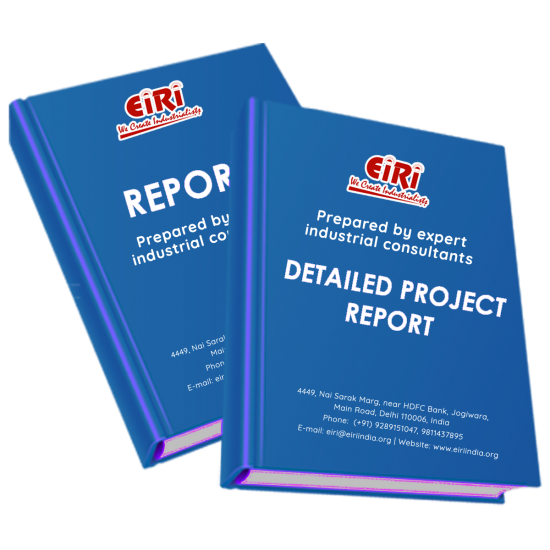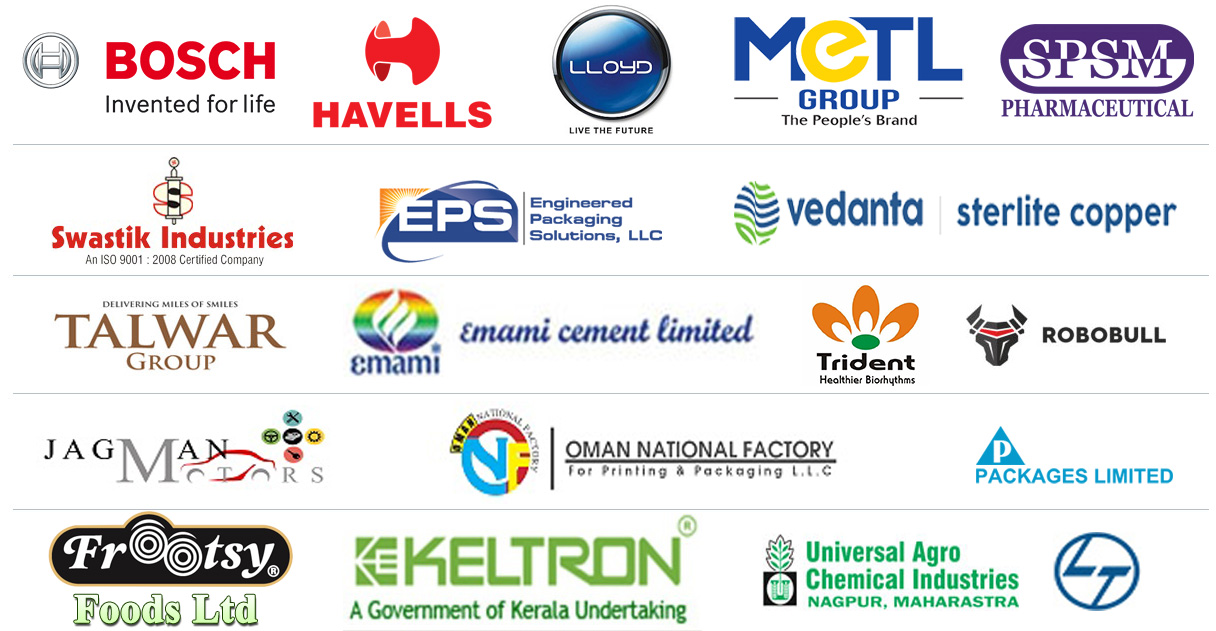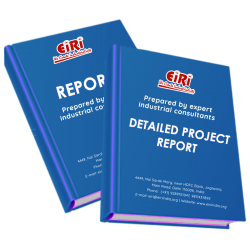Detailed Project Report on mustard oil and flour mill (integrated unit)

- More than 45 years of experience
- Managed by expert industrial consultants
- ISO 9001-2015 Certified
- Registered under MSME, UAM No: DL01E0012000
- 24/5 Research Support
Get your quesries resolved from an industry expert. Ask your queries before report or book purchase. - Custom Research Service
Speak to the our consultant to design an exclusive study to serve your research needs. - Quality Assurance
All reports are prepared by highly qualified consultants & verified by a panel of experts. - Information Security
Your personal & confidential information is safe & secure.
MUSTARD OIL AND FLOUR MILL (INTEGRATED UNIT)
[CODE NO.3175]
Indian Edible Oil Industry Vegetable oil and oil seeds are two of the essential commodities for the consumer’s daily needs. India is one of the largest producers of oilseeds in the world with an area of 26.54 million hectares under cultivation producing 23-28 million tons of oil seeds every year depending on the monsoons. It produces nine types of oil seeds namely, Groundnut, Soybean, Rape/Mustard seed, Sunflower seed, Sesame seed, Castor seed, Niger seed, Safflower seed, Linseed. It also enjoys the position of being the third
largest consumer of edible oil in the world next only to US and China owing to its growing population, rising income levels and changing eating habits.
The per capita consumption has grown by 8.1 per cent over the last five years. It stood at 14.4 kg/person per
annum which is considerably low as compared to the world average of 24 kg/ annum. Developed countries like Japan, Brazil and USA consume around 20.8 kg/annum, 21.3 kg/annum and 48.0 kg/annum respectively. The imports mainly comprise Palm oil, Soybean oil and Sunflower oil. Indonesia, Argentina and Malaysia are the key exporters of oil to India. Olive oil is mainly imported from European countries like Italy and Spain.
Rapeseed oil is imported from UAE.
While mustard seeds are abundantly produced in most parts of India, its milling/grinding is mostly done by the large centralized plants, which have the advantage of high efficiency and reduced costs due to economies of scale. Despite the clear advantage of large plants, the importance of tiny decentralized oil extraction units cannot be discounted as they also prove to be economic and present opportunities for self- employment in situations:
The unit is required to maintain a minimum stock of seed and enough to continue operations throughout the year. Hence, the location of the unit has to be essentially in those areas where the raw material is locally available in abundance.
In general, more profit could be made if the cooking oil is packed into retail size bottles.
The viability of any oil extraction unit considerably depends on the sale of the oil cake, which is extensively used as animal feed and other sub-products.
Primitive mills and presses for extraction of oils from seeds have been in use service for long.
Mechanization came with the introduction of the hydraulic press by the end of the 18th Century. This too was replaced by the more efficient screw press or expeller towards the end of the last century.
Edible oil should have a fairly high keeping quality. However oils get spoilt in storage due to various spoilage factors, the chief among them being oxidation. The edible oils and fats such as olive, cottonseed, corn, groundnut, sesame and soybean etc have been found to be almost completely assimilated. As such vegetable oils may be classed as edible and non-edible. Important vegetable oils are castor, coconut, cottonseed, linseed, mustard, olive, palm, groundnut, sesamum, soyabeans, sunflower and rice bran oil etc.
Oil seed crops occupy an important place in the agriculture and industrial economy of the country. India is perhaps the only country in the world having the largest number of commercial varieties of oil seeds. Mustard Oil is also one of the major oil seeds from which edible oil is produced. In Northern, Central, and east India, It is the medium of cooking food. Besides it is also used in preparation of Pickles. The Mustard Oil Cake (By Product) is used as cattle feed.
COST ESTIMATION
Plant Capacity : MUSTARD OIL & FLOUR MILL(INTEGRATED
Land & Building (15.93 Acres) : Rs. 21,51 Cr
Plant & Machinery : Rs. 27.68 Cr
Working Capital for 1 Months : Rs. 58.88 Cr
Total Capital Investment : Rs. 10.45 Cr
Rate of Return : 45%
Break Even Point : 367%
INTRODUCTION
WHEAT FLOUR MILL
VARIETIES OF MUSTARD SEED
FATTY ACID COMPOSITION OF MUSTARD OIL MUSTARD OIL
(FROM BLACK MUSTARD SEED)
MUSTARD OIL (FROM WHITE MUSTARD SEEDS)
PHYSICO-CHEMICAL CHARACTERISTIC
OIL SEEDS & % OF OIL CONTENT
USES AND APPLICATIONS OF MUSTARD OIL
USES AND APPLICATIONS OF WHEAT FLOUR
MUSTARD OIL PROPERTIES 18
OVERVIEW OF INDIAN EDIBLE OIL INDUSTRY
MARKET SURVEY
DOMESTIC EDIBLE OILS PRODUCTION, IMPORT & CONSUMPTION
INDIA EXPORT DATA OF AGRO FOOD PRODUCT: OIL MEALS
MARKET POSITION OF PACKAGED WHEAT FLOUR
ROLLER FLOUR MILLING IN INDIA
MANUFACTURERS OF FLOURS, MAIDA AND SUJI
COMPOSITION OF FLOUR
FLOUR IMPROVERS
RAW MATERIALS FOR FLOUR MILLS
ROLLER FLOUR MILL MACHINERY
MANUFACTURING PROCESS OF WHEAT FLOUR
PROCESS FLOW SHEET
MANUAL PROCESS (OPTIONAL) FOR CLEANING AND CONDITIONING
QUALITY AND GRADE
GENERAL TESTS
MANUFACTURING PROCESS OF MUSTARD OIL
MANUFACTURING PROCESS (MUSTARD OIL)
MANUFACTURERS AND EPORTERS OF MUSTARD OILS
GENERAL PLANT LAYOUT
OTHER MISCELENEOUS ACTIVITIES
STANDARDS
WASTE TREATMENT PRIMARY TREATMENT
EQUIPMENT REQUIREMENT
SUPPLIERS OF OIL EXPELLERS MACHINERY
SUPPLIERS OF RAW MATERIALS
STANDARDS APPLICABLE FOR STORAGE OF MUSTARD
STANDARDS APPLICABLE FOR DOMESTIC MARKET
QUALITY PARAMETERS
SAFETY PARAMETERS
STANDARDS FOR GRADING
EGAL AND REGULATORY FRAMEWORK GOVERNING
OIL SEED PROCESSING INDUSTRY:
PROCESS FLOW DIAGRAM OF OIL REFINING SECTION
PROCESS FLOW DIAGRAM OF OIL REFINING SECTION – CONTINUES
PROCESS FLOW DIAGRAM OF OIL PACKING SECTION
MATERIAL BALANCE FOR PREPARATORY SECTION
MATERIAL BALANCE FOR OIL REFINERY
COMPLETE PLANT AND MACHINERY SUPPLIERS FOR
SOLVENT EXTRACTION PLANT 169
LIST OF FOREIGN MANUFACTURER/SUPPLIER OF PLANT & MACHINERY
SUPPLIERS OF PLANT AND MACHINERY
SUPPLIERS OF FLOUR MILLING MACHINE
CHAKKI FLOUR MILL MACHINERY
SUPPLIERS OF WHEAT (RAW MATERIALS)
CONSULTANT FOR SETTINGUP FLOUR MILL
APPENDIX – A:
1. COST OF PLANT ECONOMICS
2. LAND & BUILDING
3. PLANT AND MACHINERY
4. FIXED CAPITAL INVESTMENT
5. RAW MATERIAL
6. SALARY AND WAGES
7. UTILITIES AND OVERHEADS
8. TOTAL WORKING CAPITAL
9. COST OF PRODUCTION
10. PROFITABILITY ANALYSIS
11. BREAK EVEN POINT
12. RESOURCES OF FINANCE
13. INTEREST CHART
14. DEPRECIATION CHART
15. CASH FLOW STATEMENT
16. PROJECTED BALANCE SHEET
How to Make Project Report?
Detailed Project Report (DPR) includes Present Market Position and Expected Future Demand, Technology, Manufacturing Process, Investment Opportunity, Plant Economics and Project Financials. comprehensive analysis from industry covering detailed reporting and evaluates the position of the industry by providing insights to the SWOT analysis of the industry.
Each report include Plant Capacity, requirement of Land & Building, Plant & Machinery, Flow Sheet Diagram, Raw Materials detail with suppliers list, Total Capital Investment along with detailed calculation on Rate of Return, Break-Even Analysis and Profitability Analysis. The report also provides a birds eye view of the global industry with details on projected market size and then progresses to evaluate the industry in detail.
We can prepare detailed project report on any industry as per your requirement.
We can also modify the project capacity and project cost as per your requirement. If you are planning to start a business, contact us today.
Detailed Project Report (DPR) gives you access to decisive data such as:
- Market growth drivers
- Factors limiting market growth
- Current market trends
- Market structure
- Key highlights
Overview of key market forces propelling and restraining market growth:
- Up-to-date analyses of market trends and technological improvements
- Pin-point analyses of market competition dynamics to offer you a competitive edge major competitors
- An array of graphics, BEP analysis of major industry segments
- Detailed analyses of industry trends
- A well-defined technological growth with an impact-analysis
- A clear understanding of the competitive landscape and key product segments
Need Customized Project Report?
- Ask for FREE project related details with our consultant/industry expert.
- Share your specific research requirements for customized project report.
- Request for due diligence and consumer centric studies.
- Still haven't found what you're looking for? Speak to our Custom Research Team
About Engineers India Research Institute:
Note: We can also prepare project report on any subject based on your requirement and country. If you need, we can modify the project capacity and project cost based on your requirement.
Our Clients

Our Approach
- Our research reports comprehensively cover Indian markets (can be modified as per your country), present investigation, standpoint and gauge for a time of five years*.
- The market conjectures are produced on the premise of optional research and are cross-accepted through associations with the business players
- We use dependable wellsprings of data and databases. What's more, data from such sources is handled by us and incorporated into the report
Why buy EIRI reports?
- Our project reports include detailed analysis that help to get industry Present Market Position and Expected Future Demand.
- Offer real analysis driving variables for the business and most recent business sector patterns in the business
- This report comprehends the present status of the business by clarifying a complete SWOT examination and investigation of the interest supply circumstance
- Report gives investigation and top to bottom money related correlation of real players/competitors
- The report gives gauges of key parameters which foresees the business execution























